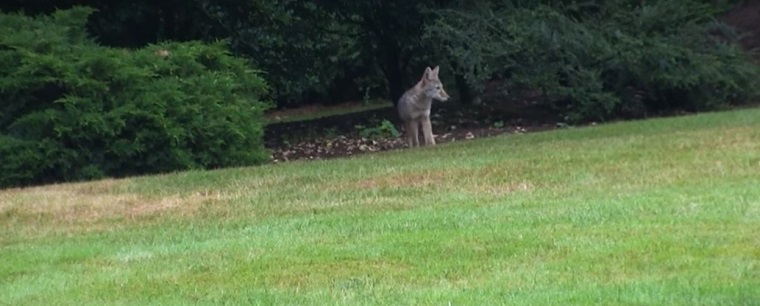-
info@aaanimalcontrol.com
Call us for help in your town
Humane Wildlife Education
Do Coyotes Live in Urban Or Rural Areas?
Need coyote removal in your hometown? We service over 500 USA locations! Click here to hire us in your town and check prices - updated for year 2020.
Ninety-nine percent of the time, you’ll find that coyotes want to avoid human interaction, rather than provoke or initiate it. They hate coming into contact with the human world, and they’re very cautious creatures too. They are renowned for being almost impossible to trap, both in leg hold traps and live cage traps, and they are tenacious and determined. Almost as much as they are stubborn.

Despite doing everything they can to avoid interactions with humans, coyotes have been left with very little choice but to move right into our back gardens. Territories in ‘the wild’ are harder and harder to come by, and food is getting scarce too. Plus, one of the main sources of food for these opportunistic scavengers is rodents. In areas where there are high numbers of rats, usually in residentially and heavily populated human areas, you will find coyotes. They’ve had to move in close, living alongside us in some cases, in order to survive.
Your backyard provides the average passing nuisance wild critter a treasure trove of goodies. There are no doubt rats near by. There always are in areas surrounding humans. Plus, humans are really messy. There are garbage bags outside, sometimes in dumpsters, sometimes left on the side of the street. Raccoons, rats, mice, opossums, skunks, and more like to have a good ol’ forage through those, and they provide food for the coyotes too. Larger raccoons will put up a heck of a fight, but smaller mammals don’t really stand a chance against the cunning and cautious coyote.
You’d also be surprised by how frequently humans will just leave food lying around too. A couple of bowls of cat or dog food on the back porch might not seem like much to you, but there’s a host of wild critters waiting in the wings to snap that up. If a coyote doesn’t come a’knocking, it will only be a matter of time before another wild critter does. That’s why the first thing we encourage when you discover a wild animal control issue, is a big clean up. This means removing all traces of food, as well as fresh water, and even shelter too. Those are the three things that nuisance wildlife tend to be looking for.
Alongside garbage bags, pet dishes, and rodents, your garden also offers up a five star banquet for most passing critters, unless you’ve put in the hard work to discourage them. If you have vegetables and fruits growing in your yard, coyotes will devour them too, and they’ll think nothing of digging up half your garden to get what they’re looking for.
In the ‘wild’ and, by that, we mean NOT in your back yard, coyotes would be seen across all of North America, and in some of Central America and Mexico also. The wonderful thing about coyotes (for them, not for us) is that they are incredibly adaptable. It doesn’t take them long to adapt to a brand new territory, and this is what has led to their success. They are not of a concern in any way in terms of conservation. In fact, in so many places these days, the beautiful creature is considered a pest.
If the coyote is hanging around your yard, there’s a good chance it could be a female. She’ll be looking for something that closely resembles a hollow tree, a den, or even a spot under a ledge. Old skunk, marmot, or badger dens are perfect. These are the places she’ll usually build her nest, ready for babies, in the ‘wild’. You’ll know if the nursing spot belongs to a coyote too, because the mother will pull fur from her own belly to line the den, and she’ll use dried-out grass to fill the gaps. Males and females do stick together, and the creatures tend to hang around in packs too. Females within a group — usually siblings or relatives in some way — will stick together to rear the young within a pack even if they haven’t successfully mated themselves. The strong family unite these animals build is actually quite remarkable.
For more information, you may want to read How to get rid of coyotes or click on one of these guides that I wrote:
How To Guide: Who should I hire? - What questions to ask, to look for, who NOT to hire.
How To Guide: do it yourself! - Advice on saving money by doing wildlife removal yourself.
Guide: How much does wildlife removal cost? - Analysis of wildlife control prices.


















